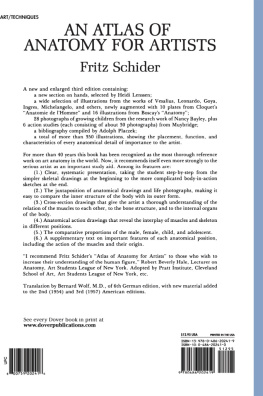Auerbach - Medicine for the Outdoors
Here you can read online Auerbach - Medicine for the Outdoors full text of the book (entire story) in english for free. Download pdf and epub, get meaning, cover and reviews about this ebook. year: 2015, publisher: Elsevier Health Sciences, genre: Children. Description of the work, (preface) as well as reviews are available. Best literature library LitArk.com created for fans of good reading and offers a wide selection of genres:
Romance novel
Science fiction
Adventure
Detective
Science
History
Home and family
Prose
Art
Politics
Computer
Non-fiction
Religion
Business
Children
Humor
Choose a favorite category and find really read worthwhile books. Enjoy immersion in the world of imagination, feel the emotions of the characters or learn something new for yourself, make an fascinating discovery.

Medicine for the Outdoors: summary, description and annotation
We offer to read an annotation, description, summary or preface (depends on what the author of the book "Medicine for the Outdoors" wrote himself). If you haven't found the necessary information about the book — write in the comments, we will try to find it.
Medicine for the Outdoors — read online for free the complete book (whole text) full work
Below is the text of the book, divided by pages. System saving the place of the last page read, allows you to conveniently read the book "Medicine for the Outdoors" online for free, without having to search again every time where you left off. Put a bookmark, and you can go to the page where you finished reading at any time.
Font size:
Interval:
Bookmark:
- Figures in General First-Aid Principles
- Figures in An Approach to the Unconscious Victim
- Figures in Chest Injury
- Figures in Chest Pain
- Figures in Bleeding
- Figures in Shock
- Figures in Head Injury
- Figures in Fractures and Dislocations
- Figures in Burns
- Figures in Abdominal Pain
- Figures in Emergency Childbirth
- Figures in Head (Also Eye, Ear, Nose, Throat, and Mouth)
- Figures in Disorders of the Gastrointestinal Tract
- Figures in Skin Disorders
- Figures in Minor Bruises and Wounds
- Figures in Musculoskeletal Injuries
- Figures in Male Genital Problems
- Figures in Injuries and Illnesses Due to Cold
- Figures in Injuries and Illnesses Due to Heat
- Figures in Snakebite
- Figures in Insect and Arthropod Bites
- Figures in Lightning Strike, Tornado (Cyclone), Hurricane (Typhoon), Flood, Earthquake, Tidal Wave (Tsunami), Landslide (Mudslide), Volcano, and Snow Avalanche
- Figures in Hazardous Aquatic Life and Aquatic Infections
- Figures in Underwater Diving Accidents
- Figures in Animal Attacks
- Figures in Wild Plant and Mushroom Poisoning
- Figures in Transport of the Injured Victim
- Figures in Ground-to-Air Distress Signals
- Figures in Procedures
- Figures in Appendix Four
- Figures in Appendix Six
This Appendix lists drugs that are mentioned in the book, and some that are not mentioned but that might be carried and taken by persons you may encounter.
Before administering any medication, ask the recipient if he suffers from allergy to it. If so, don't administer the drug or anything that you feel is similar to it. Use medications only if you have a reasonable understanding of what you are treating. Always have a doctor or pharmacist explain the actions and side effects of any drug you obtain to be carried with you. Exercise extreme caution and don't administer drugs to pregnant women, infants, or small children unless absolutely necessary. Drugs have many side effects. Some of the common ones are noted. Be familiar with the drugs you carry.
Many drugs are used to suppress symptoms (such as abdominal pain, nausea and vomiting, and headache) of potentially serious disorders. In these cases, don't overmedicate the victim if you need to watch for a worsening condition.
Drugs are listed here by purpose. I have listed some products that are available over-the-counter; however, many of the drugs require a prescription. This is not a comprehensive formulary, but rather emphasizes the medications most likely to be used or encountered.
Doses are listed in absolute amount (generally, for adults) or in amount to be given per body weight or per age (generally, for children). For determination of weight, 1 kilogram (kg) equals 2.2 pounds (lb). The drug should be administered orally unless otherwise specified.
Because children usually require a fraction of the dose used for adults, they may need to have the drug in special tablet or liquid form. The average weights for children, according to age, are as follows:
1 year10 kg (22 lb)
3 years15 kg (33 lb)
6 years20 kg (44 lb)
8 years25 kg (55 lb)
 years30 kg (66 lb)
years30 kg (66 lb)
11 years35 kg (77 lb)
Corticosteroids (steroids) are interchangeable to a certain degree. If you must substitute, here is a rough measure of equivalence: 20 mg prednisone equals 16 mg methylprednisolone equals 3 mg dexamethasone.
Drugs are listed in the following order:
)
)
)
)
)
)
)
)
)
)
)
)
)
)
)
)
)
)
)
)
)
)
)
)
)
)
)
In general, it's best to avoid taking any medication when pregnant (particularly during the first trimester, or first third, of pregnancy) to avoid the risk of fetal malformation, or illness or injury in the newly born child. A pregnant woman should be discouraged from taking over-the-counter drugs. However, women can certainly become ill during pregnancy, so it's important to know what can be administered safely and what should be absolutely avoided. Fortunately, many of the drugs that are labeled potentially hazardous have only been proved hazardous in laboratory animals, frequently in relative doses that far exceed their common usage in humans. Furthermore, some drugs, such as diazepam and salicylates, formerly thought to cause malformation of the developing fetus, have since been proved safe when administered in normal therapeutic doses.
The following list reflects recommendations compiled from the current medical literature. Whenever possible, a pregnant woman contemplating use of a medication should seek advice in advance from her physician.
amoxicillinclavulanate
ampicillin/amoxicillin
cephalosporins
clotrimazole
erythromycin
gentamicin topical eye medication
mefloquine (apparently safe)
miconazole
nystatin
paromomycin
penicillin
proguanil
terconazole
acyclovir
chloramphenicol
chloroquine (apparently safe)
ciprofloxacin
fluconazole
gentamicin injection
metronidazole
nitrofurantoin
primaquine
quinacrine
quinine
trimethoprimsulfamethoxazole
fleroxacin
norfloxacin
ofloxacin
tetracycline/doxycycline (causes staining of teeth and altered bone development in fetus)
acetaminophen
hydrocodone
meperidine
oxycodone
aspirin (during last 3 months of pregnancy)
codeine
ibuprofen and other NSAIDs (during last 3 months of pregnancy)
indomethacin
diphtheria toxoid
hepatitis A
hepatitis B (killed)
pooled serum immunoglobulin
tetanus immunoglobulin
tetanus toxoid
cholera
influenza (inactivated virus)
meningococcal vaccine
pneumococcal vaccine
polio (oral and injection)
rabies vaccine (preexposure; must be used for postexposure)
tuberculosis (BCG)
typhoid
typhus
yellow fever
measles
mumps
rubella
smallpox
varicella
cimetidine
dimenhydrinate
epinephrine (use only in a critical situation)
famotidine
loratadine
topical corticosteroids, decongestants (e.g., oxymetazoline)
albuterol
chlorpheniramine
epinephrine (avoid in a noncritical situation)
hydroxyzine
prednisone
brompheniramine
cyclizine
dimenhydrinate
diphenhydramine (during first trimester)
Font size:
Interval:
Bookmark:
Similar books «Medicine for the Outdoors»
Look at similar books to Medicine for the Outdoors. We have selected literature similar in name and meaning in the hope of providing readers with more options to find new, interesting, not yet read works.
Discussion, reviews of the book Medicine for the Outdoors and just readers' own opinions. Leave your comments, write what you think about the work, its meaning or the main characters. Specify what exactly you liked and what you didn't like, and why you think so.











